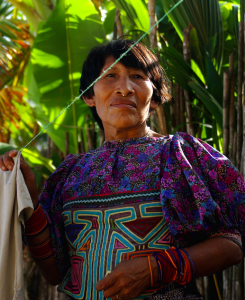Panama is a country with a diverse and complicated history when it comes to its indigenous. There are approximately half a million indigenous in Panama, making up around 12% of the total population, split into eight tribes (Embera, Kuna, Ngobe-Bugle, Guayami, Bokota, Talamanca, Teribe, and Wounaan). Despite making up over 10% of the total population, Panama’s indigenous suffer the most poverty per capita of any demographic in the country, and that makes it hard for many of them to live a quality life. For centuries, political and cultural clashes between the indigenous and the government have made progress hard, but things are slowly changing, and are about to get a big leg up from the World Bank.
How the World Bank plans to invest in the country’s indigenous population
The World Bank Board of Directors recently approved an $80 million project that will aim to mprove the infrastructure and quality of health, education, water, and sanitation services throughout all of the autonomously managed indigenous communities of Panama. The innovative project is based on the priorities established by the indigenous communities themselves, voted on and presented by their councils and ratified by local leaders. The loan will go to the Panamanian government with the explicit goal of working together with each indigenous council to make sustainable improvements that can be managed on both a local and federal level, with the outcome being a higher quality of life and less poverty for each of the tribes, and each of their communities.
According to indigenous Kuna community leader Maximiliano Igwayoikiler, “this support in the Development Plan is important as the Indigenous peoples have shared their development vision with the national government. These are isolated communities which need access to roads, schools, medical clinics, and water, all the while maintaining their culture and identity, defending their territories and protecting the natural resources that are life for the Native Peoples and the country.”
Bringing modern services to places where they’ve never previously existed
The delicate balance here is to not just give Panama’s indigenous more resources, but allow them to use these resources to modernize themselves without losing their culture or customs. When it comes down to it, Panama’s indigenous have lacked basic things like well-maintained roads, clean drinking water, education, and even many basic food staples. If the World Bank program goes as planned, this will be fixed, giving indigenous Panamanians the ability to take better care of themselves, as well as evolving their healthcare, safety, and quality of life, within the boundaries of their socio-cultural structure and geographic location.
According to María Luisa Romero, Interior Minister of Panama, “from the outset, this government has been firmly committed to defending and promoting human rights in which increased participation of Indigenous peoples and state policies to improve their quality of life are central issues. We recognize the rights of native peoples as the backbone of Panamanian culture.” The loan has a repayment plan of 25 years, with a grace period of 5.5 years, and hopes are that projects will begin immediately in 2018, as soon as planning and finances have been allocated locally.
